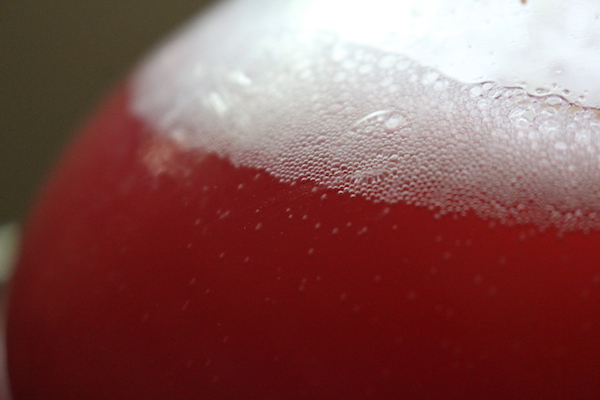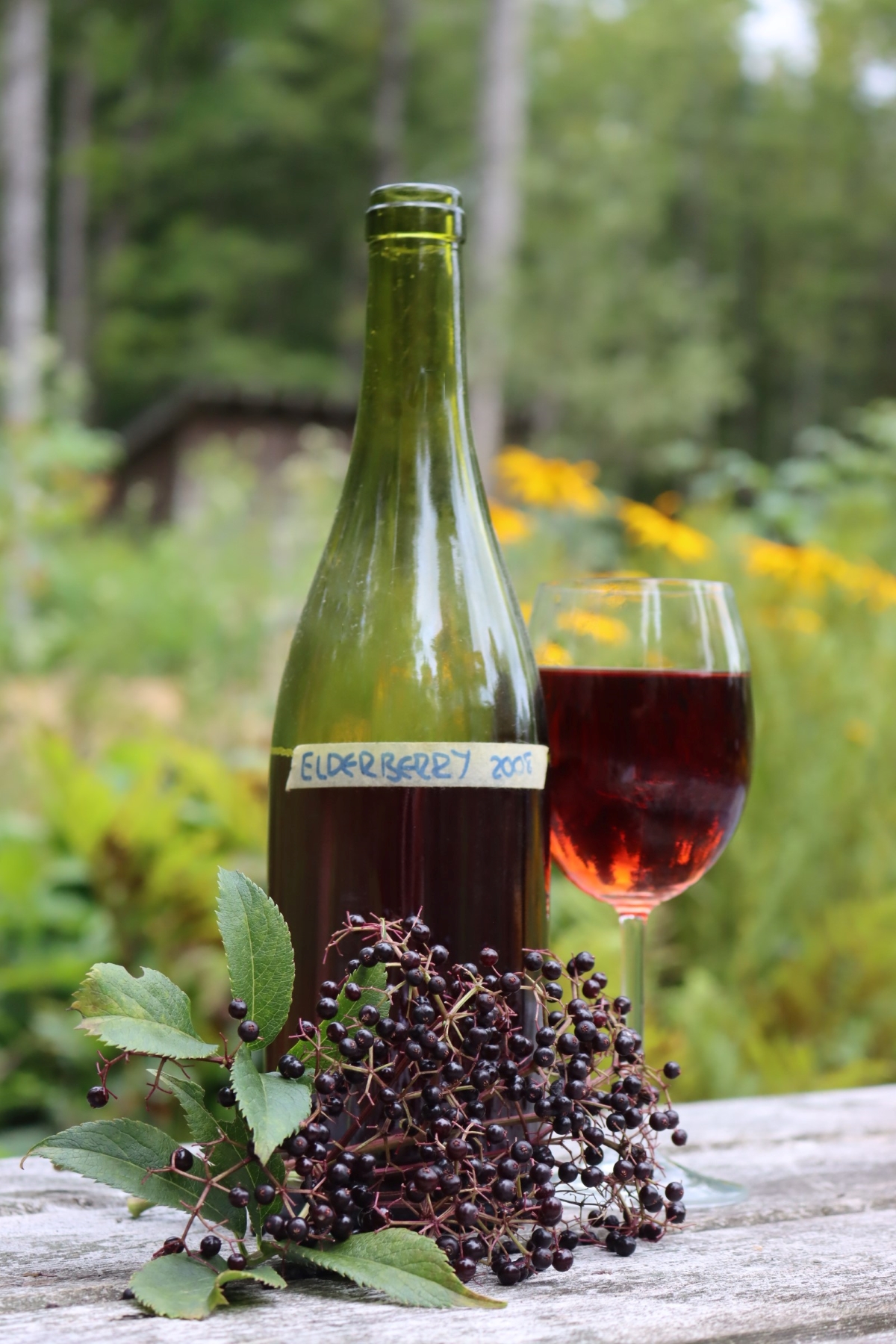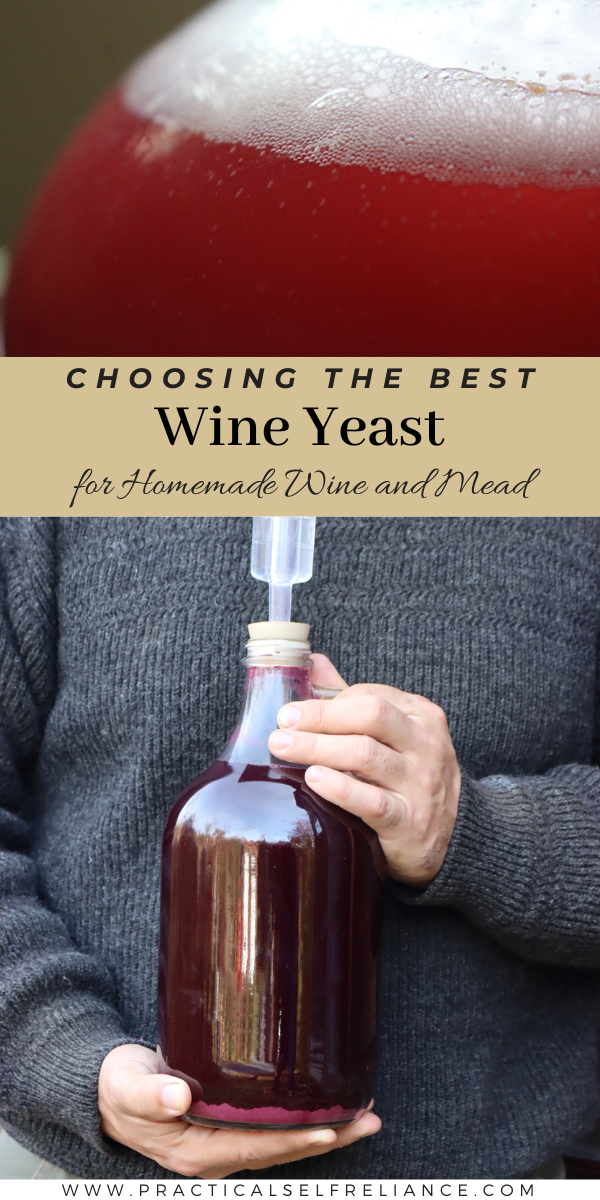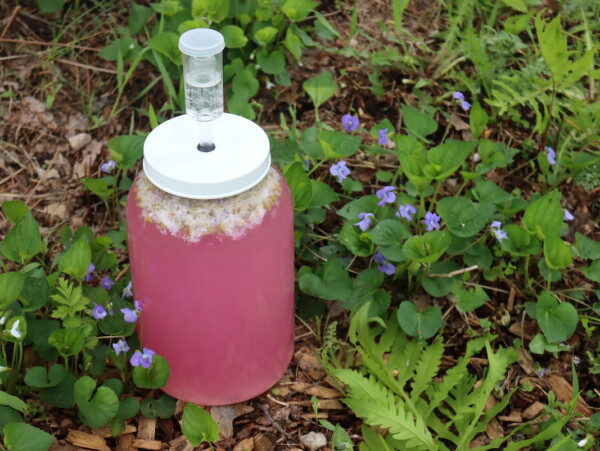Affiliate disclosure: This post may contain affiliate links. Please see our Privacy Policy.
Wine yeast (and mead yeast) can play an important role in flavor development, and choosing the right yeast can mean the difference between spectacular homemade wine…and something that’s “just Ok.”

Choosing the right yeast for winemaking is incredibly important to the finished character of the wine. It’s almost as important as using high-quality fruit, as, believe it or not, wine yeast contributes a lot of flavor to the finished wine.
Certain wine yeasts metabolize acids, changing the pH of the wine. Others contribute floral or fruit esters, to complement the fruit juice and add complexity.
Some mellow natural fruit tannins, while others leave them in place. Certain yeasts are known for deepening color and amplifying aromas.
Certain yeasts work well at low temperatures, while others need warmth and high-nitrogen environments to thrive.
Lastly, the alcohol tolerance of the yeast will determine not only the finished ABV of the wine, but also how much residual sweetness is left at the end of fermentation. Using a wine yeast with an alcohol tolerance of 13% will make a very different wine than if you choose a champagne yeast with a tolerance of 18%.
If you’re new to winemaking, I’d suggest you also read the other posts in this series, including:
- Beginners Guide to Making Fruit Wines, where I take you through all the steps in the winemaking process.
- Small Batch Winemaking can be done for micro-batches, making as little as 1 bottle of wine at a time, and the process and equipment are a bit different with super tiny batches.
- How to Make Mead (Honey Wine) is mostly the same, but there are some particularities when working with honey.
- Equipment for Winemaking, which covers all the durable equipment you’ll need to make your first batch (besides your ingredients).
- Ingredients for Winemaking, which covers all the other things you’ll need (besides yeast).
- How to Make Wine from Grapes, though not necessarily for beginners, but everyone always asks about this one first!
- Winemaking Recipes can be hard to find, but I’ve put together a list of more than 50 to get you started.
- Meadmaking Recipes are even more obscure, but I’ve got you covered there too.
I also have instructions for making hard cider, pear cider (perry), and homemade beer, if you’re into other types of homemade drinks.

Historical Wine Yeast
A quick note before I take you through each of the types of modern wine yeast, one by one.
Many people believe that historical brewing and winemaking relied on random chance and wild yeasts, but our ancestors were smarter than that. They may not have known about yeast biology, but they did know that the air in a certain building (or room) produced better wine than others.
They knew that batches came out better when stirred with a certain wooden paddle, or when primary fermentation was done in a certain frequently used cask.
The timbers in wineries were naturally impregnated with the right yeasts over time, as we’re aging barrels. They had tools for harvesting sediment from batches, as well as specialized tools that were floated on top of batches to collect specific top-fermenting yeasts (especially in nordic beer breweries).
Wine was too precious a commodity to leave up to winds and chance, and while they may not have had named varieties in packets, they were selected for specific wine yeasts (and beer yeast, mead yeast, and even whisky distillery yeast, etc).
You can learn more about those historical techniques in these books:
- Historical Brewing Techniques: The Lost Art of Farmhouse Brewing
- Viking Age Brew: The Craft of Brewing Sahti Farmhouse Ale
- Ancient Brews: Rediscovered and Re-created
Types of Wine Yeast
At this point, there are literally dozens of types of wine yeasts for making homemade wine. Some are specifically selected for certain types of grape wines, while others are more broadly used and will make exceptional fruit wines and meads.
These are the most common types of wine yeasts available, along with their fermentation characteristics. If I’ve missed any of your favorites, please leave me a note in the comments, and I’ll add them.
- Red Star Cote des Blancs (Geisenheim Epernay) ~ Brings out the fruit character and sweetness of both red and white wines. A slow fermenter with low foaming, it’ll take longer to finish but help to maintain volatile esters and subtle flavors. Often selected for apple wines and ciders, as well as sweet white wines like chardonnay. Low alcohol tolerance, especially when fermented at low temperatures, means more residual sugars. Alcohol tolerance to 12-14%, ideal temperature range 64 to 86 F.
- Red Star Montrachet or Premier Classique ~ A strong fermenter known for producing full-bodied red wines. It preserves the natural tannin content of the fruit and leaves the wine with intense color. Alcohol tolerance is relatively low (only 13%), so a good choice if you’d like more residual sweetness. Ideal fermentation temperatures 59 to 86 F.
- Red Star Premier Blanc ~ A neutral wine yeast with a relatively high alcohol tolerance. Sometimes known as Champagne yeast, but it shouldn’t be used for sparkling wines (use Premier Cuvee instead). Ideal for cider, dry white wines, meads and light fruit wines. Alcohol tolerance to 15%, and temperature range 59 to 86 F.
- Red Star Premier Cuvee or Lavin EC-1118 ~ Generally known as champagne yeasts, these are strong fermenters with a neutral taste. This yeast has a high alcohol tolerance (usually to 15%, but up to 18% in ideal conditions) and may result in a wine that’s quite dry (unless you choose to back sweeten). These are great at restarting stuck fermentations. Ideal temperature range 59 to 86 F.
- Red Star Premier Rouge (Pasteur Red) ~ Encourages fruity flavors and complex aromas. Ideal for cherry and berry wines. Alcohol tolerance to 14%, and a temperature range from 64 to 86 F.
- Lavin D47 ~ Adds a strong fruity, floral character to wines with spicy aromas that would add complexity to any fruit wine. Specifically adds tropical fruit and citrus notes. Only a moderately vigorous fermenter, and may start slowly. Alcohol tolerance to 15%, ideal temperature range 59 to 86 F.
- Lalvin K1-V1116 ~ A dependable fermenter that works well in difficult fermenting conditions (low/high temperatures, low nutrients, etc). It’s also known for contributing more fruity and floral esters than other types of wine yeast. It’s generally used with “uninteresting” juices that can use a bit of perking up. High alcohol tolerance, up to 18%, and an incredible temperature range from 50 to 95F.
- Lalvin QA23 ~ Usually chosen for white wines because it adds a clean, fruity taste to the finished wine. Ferments quickly and settles out relatively fast to help clarify the wine. Alcohol tolerance to 16%, temperature range 59 to 86 F.
- MA33 Country Wine Yeast ~ Known to reduce the acidity in high-acid fruit wines, as well as tolerate high-acid environments. Used to “soften the palate” of harshly acidic fruits, while contributing fruity esters to the mix at the same time. Alcohol tolerance to 14%, ideal temperature 64 to 82 F.
Best Wine Yeast for Fruit Wine
There are plenty of recommendations on the internet for wine yeasts for grape wines, and if you buy a winemaking kit with juice included, it’ll come with yeast.
We mostly make country fruit wines with our homegrown fruit, and it can be tricky to choose the right yeast for fruit wines. There are fewer specific recommendations out there.
Here are the best wine yeast options for fruit wines, by type:
- Apple Wine ~ Lavin D47 or Lalvin QA23
- Banana Wine ~ Lalvin K1-V1116 or Lavin EC-1118
- Blackberry Wine ~ Montrachet or Premier Classique or Red Star Premier Rouge (Pasteur Red)
- Blueberry Wine ~ MA33 Country Wine Yeast (for high acid tolerance) or Lalvin K1-V1116
- Cherry Wine ~ Red Star Premier Rouge (Pasteur Red)
- Citrus Wine (like lemon wine, orange wine, and grapefruit wine): MA33 Country Wine Yeast (for high acid tolerance) or Lalvin K1-V1116
- Cranberry Wine: MA33 Country Wine Yeast (for high acid tolerance) or Lalvin K1-V1116
- Elderberry Wine ~ Lavin D47, Montrachet or Premier Classique or Cote des Blancs
- Floral Wines (like Rose Wine, Lilac Wine, and Dandelion Wine): Côte des Blancs or Lavin D47
- Grape Wines ~ It really depends on the type of grapes and wine style you’re going for. Read the wine yeast descriptions above to find one that suits your goals.
- Peach Wine ~ Red Star Premier Blanc or Red Star Cote des Blancs
- Persimmon Wine ~ Red Star Premier Blanc or Red Star Cote des Blancs
- Pineapple Wine ~ MA33 Country Wine Yeast (for high acid tolerance) or Lalvin K1-V1116
- Plum Wine (like greengage plum wine and damson wine):
- Pomegranate Wine ~ MA33 Country Wine Yeast (for high acid tolerance) or Lalvin K1-V1116
- Rhubarb Wine ~ Red Star Premier Blanc or Red Star Cote des Blancs
- Root & Vegetable Wines (like beetroot wine and parsnip wine) ~ Lalvin K1-V1116
- Raspberry Wine ~ Montrachet Wine Yeast or Champagne Yeast
- Strawberry Wine ~ Red Star Premier Blanc or Red Star Cote des Blancs
- Watermelon Wine ~ Lalvin K1-V1116, MA33 Country Wine Yeast, Red Star Cotes de Blanc or Lalvin D47
If I’ve missed your favorite type of fruit wine, please leave me a note, and I’ll add it.
Fermentation Ideas
Brewing up more than just wine this year? Expand your horizons with these recipes:
- How to Make Mead (Honey Wine)
- 50+ Mead Recipes
- How to Make Homemade Beer
- How to Make Hard Cider
- How to Make Pear Cider (Perry)





I LOVE your site. Quite interested in plum jams and jellys, how I found you. I/we do some of what you do have on your site and love our seasons and the bounty of berries and fruits here this fall is crazy good, ask the bears. Saskatoon/sarvis/june berries. Chokecherries and finally PLUMS, wild plums which are crazy for us here….finally. Montana near Yellowstone Park. I am heading to doing your plum jam, jelly and prunes starting this very evening. Have not done them before. I am here to say that I do make chokecherry wine and like it. Just checking to see what you, in all you’re wonderful wisdom like to use as I don’t see a recipe. I cannot believe you would not be making it. You have a lovely life. We love ours here in the woods as well. Thanks so much for your sharing your hard and lovely work Ashly (and husband).
I do indeed actually have a chokecherry wine recipe here: https://practicalselfreliance.com/chokecherry-wine-mead/
There are A LOT of winemaking recipes on this site, so some can be a bit tricky to find. Sounds like you have a lot going on over in your neck of the woods too!
Hi.
I just wanted to say how interesting and useful I found this site. There are many that recommend one type of yeast for fruit wines, so it was fantastic to find one that compares the qualities of different yeasts on one page and in an easy to understand way.
Unfortunately it doesn’t recommend a specific one for Plum or Damson but I managed to make 15 litres of wine from my damson harvest last weekend so instead of making one large batch I’ve made three!
I’m using Red Star Cote Des Blancs, Red Star Premier Blanc, and Red Star Premier Rouge. I can’t wait to have some friends over when they’re ready and taste them side by side : )
Thanks again – from Sheffield in the UK
I have made damson wine but I forgot to put it in here (https://practicalselfreliance.com/damson-wine-mead/). I used Lalvin EC-1118 and it turned out quite nice.
We’ve been hit with a bumper crop of Prickly Pears. They have a high pH (about 6) and a Brix around 10-13. What sort of yeast would you suggest?
I would try the Red Star Premier Blanc.
I am generally buried in fresh figs this time of year. Any recommendations for a suitable yeast for a fresh fig wine (or perhaps mead)?
I would try the Red Star Premier Classique and see how you like that.
What would you recommend for mulberry wine? Also, do you have instructions for wild fermentation, without the use of added yeast? I am new to this and a bit confused. One more question, why are my wines cloudy? Thanks
You certainly can make wine with wild fermentation but the yeast contributes to the overall taste of the wine in a significant way. For this reason most people choose to purchase yeast to have a more consistent result. The Red Star Premier Rouge is a great choice for berries. Cloudiness in the wine is often caused by pectin. If you want your wine to be more clear you can use a pectic enzyme but it’s totally optional.
Greetings from the UK. I have been dabbling with fermenting Goji Berry wine. Do you have a recommendation for the best yeast? I used Gervin GV2 which was ok but I think a different yeast would improve things. Thanks.
Maybe give the Red Star Premier Rouge a try.
I may have missed this on your site but I am curious about the amount of yeast to use. I’ve read that a packet of yeast makes about 5 gallons of wine. However I am going to make a gallon-sized batch of wine for my first time and can’t figure out how much yeast to use. Should I just divide up a packet by 5. or use the whole packet?
That is correct. A packet of yeast is enough to do 5 gallons, but we usually just use the whole packet when we’re doing a full gallon.
Hi. Would love to see your recommendations for a pear wine. Thanks!
A champagne yeast is always a great choice with a nice neutral flavor.
First timer trying to make prickly pear cactus wine. What would you recommend for prickly pear fruit wine?
Thanks
When in doubt, the Champagne Yeast is always a good option with a neutral flavor.
Do you have a suggested yeast for use with Pears?
We usually recommend a Champagne Yeast for pear wine. Here is a link for one that we recommend. https://amzn.to/3OA1IFB
Yeast for prickly pear cactus? I pitched cortes des blancs, crossing fingers.
That should work just fine.
Thanks for the great info. Do you have any experience/recommendations for a yeast to increase alcohol content in kombucha?
Thanks
I don’t have a lot of experience with that since kombucha is typically not brewed as an alcoholic beverage however it does have some alcohol content. Here is an article that might point you in the right direction. https://www.brewdrkombucha.com/blog/alcohol-in-kombucha-what-you-need-to-know
What is recommended for type two diabetics. Meaning lowest sugar content. Does higher alcohol content equal lower sugar or dryer wine.
I don’t think alcohol is typically recommended at all for type 2 diabetics but yes a higher alcohol content usually also means a lower sugar or dryer wine.
What would you recommend for red tomato and green tomato wines?
Hi there! There was not a yeast recommendation for Plum wine. Help!
If it’s not specified, the Red Star Premier Blanc is always a good choice. With the plums it can sometimes depend on the flavor of the plum since they can vary so much in taste.
Hello! Thank you so much for your website. It’s so helpful in my journey to start preserving! I have a question about yeast – I started Dandelion wine according to your recipe, but maybe got confused and chose Lavin-1118 as my yeast. Activity is slow, now 2 days in. (Basically a large bubble every 4 seconds through the airlock, in a 1 gallon fermenter.) (or maybe that’s not slow?! Who knows!) It looks very different, activity-wise, from the small batch of lilac wine I am trying with Red Star Premier Blanc. Did I choose the wrong yeast for the dandelion, and would it be better (or even possible) to add in another yeast now? Thank you!!
We usually recommend the Premier Blanc for the Dandelion Wine as well. I wouldn’t try to add another yeast in the mix now. I would just wait and see what happens and then you can always do the Premier Blanc on the next batch.
Dear Ashley,
Thanks for putting this web site together. I am making mass wine in Northern Idaho and our growing season is short. I am looking for red wine yeast that will stop fermenting at 12% or lower and I have not had any luck finding this type of yeast. On your web site above you mention the Premier Classique Red Star Wine Yeast goes to 13%. Any suggests where to look?
Thank you in advance!
Gerard
You’re welcome. We’re so glad you are enjoying the site. You should be able to find the yeast on Amazon.